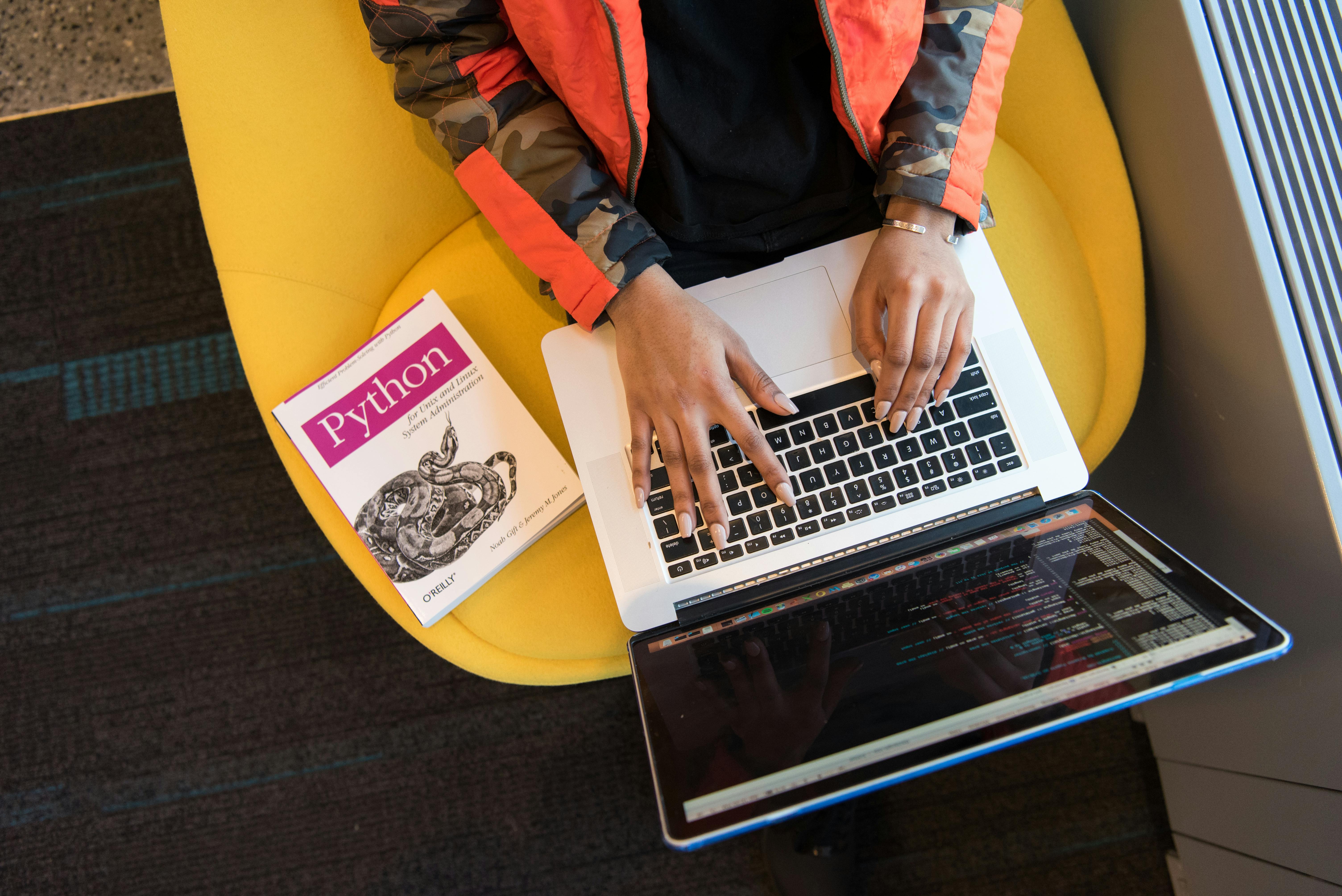How to Enhance Your Resume’s Visual Appeal Without Sacrificing Professionalism
Crafting a standout resume that maintains professionalism is an art form. Drawing insights from hiring leaders to CEOs, we’ve compiled sixteen design tips that strike the perfect balance. From strategically incorporating subtle color to carefully selecting legible typography, discover how to elevate the visual appeal of your resume.
- Strategically Add Subtle Color
- Use Color to Develop Brand
- Embrace White Space and Simplicity
- Incorporate Simple Infographics
- Limit Words and Maintain White Space
- Apply KISS Principle to Design
- Focus on Clarity and Achievements
- Select Industry-Appropriate Templates
- Keep Resumes Simple for ATS
- Choose Modern, Readable Fonts
- Quantify Accomplishments Clearly
- Use Formatting Styles Discreetly
- Effectively Utilize Negative Space
- Opt for a Single Font Family
- Highlight Skills with Clean Formatting
- Choose Legible Typography Carefully
Strategically Add Subtle Color
Adding small pops of color strategically can enhance the visual appeal of your resume. For instance, consider using a different color for your name at the top of the resume to make it stand out subtly. Additionally, sparingly incorporate color for section headings or dividers to establish a visual hierarchy and organization. Ensure that the chosen color palette complements the overall design and maintains a professional yet eye-catching aesthetic. By integrating subtle pops of color in these key areas, you can elevate the visual appeal of your resume while preserving its polished and professional appearance.
Suzanne Ricci, Chief Success Officer, Computer Coach Training Center
Use Color to Develop Brand
A well-designed resume is key to getting the interviews you want and ultimately the jobs you desire. Keeping things professional while standing out from the crowd can be easier said than done. One way to do this while remaining professional is through the use of color. Adding a touch of color to your headers and bullet points makes your resume pop. This also gives you the opportunity to develop a personal brand wherein all communication from you is cohesive, and you look put-together and professional. The color scheme you select should be reflective of the job for which you are applying. Depending on the industry you’re applying to, you may want to think about muted tones or pastels as opposed to neon. Though, of course, if you are a snazzy designer looking to promote your skills, get those neons in there!
Emily Webster, Digital Marketing Executive, Growthlabs
Embrace White Space and Simplicity
Simplicity is key, and less is more.
I’ve worked with senior executives who have their resumes in as small as a 9-point font and want to share everything about themselves.
I remind my clients that if someone has to squint to read their resume, that’s not a very good user experience.
Lots of white space on a resume also shows confidence.
Not only is it easier to read, but candidates are demonstrating they know how to tailor their resume to highlight their most relevant experience for the role.
Sometimes it’s not just what we add to a resume; it’s also the irrelevant information we leave off.
Less is more.
James Tomasi Kennedy, Executive Career Coach-Recruiter
Incorporate Simple Infographics
Instead of purely text-based skill lists, consider incorporating simple infographics. Small bar charts or icons can visually represent a candidate’s proficiency levels in various skills. This:
Breaks up text: Enhances readability and keeps the resume design engaging.
Demonstrates quantifiable abilities: Provides a quick snapshot for hiring managers seeking specific competencies.
Shows attention to detail: Demonstrates effort and creative thinking on the candidate’s part.
Jyoti Tewari, Director HR, Webuters Technologies Pvt Ltd
Limit Words and Maintain White Space
I recommend limiting words when possible (bullets versus sentences), maintaining some white space on the page (so it’s not cluttered), using one page per 10 years of experience (less than one page if possible), and remembering—resumes are glanced at and typically not read. And while I know not everyone loves a photo on the resume, I still recommend them.
Kerri Roberts, Founder & CEO, Salt & Light Advisors
Apply KISS Principle to Design
Follow the age-old rule of thumb: keep it simple, stupid (KISS). Less is more when it comes to the visuals on your resume. If you’re doubting anything, simplify. Use 1-2 fonts, 1-2 colors, and keep it as short as you can while providing the relevant details.
Ciera Holzenthal, Owner, Ciera Design Studio
Focus on Clarity and Achievements
In today’s competitive job market, standing out is essential, but so is maintaining professionalism. One design element that can significantly enhance the visual appeal of a resume without compromising its professional integrity is simplicity.
Focus on Clarity and Simplicity: The key to a visually appealing resume is clarity. Instead of cluttering your resume with boxes, multiple fonts, or images—which can interfere with applicant tracking systems (ATS)—opt for a clean, straightforward layout. The goal is to ensure that your qualifications and achievements are the focal points of your resume.
Highlight Achievements with Precision: Use simple design elements to draw attention to your most significant achievements. Employ bullet points to break down your accomplishments into easy-to-read, quantifiable statements. This not only helps in maintaining a tidy appearance but also makes your results and impacts immediately clear to recruiters.
Choose Readable Fonts and Layouts: Select fonts that are professional and easy to read, such as Arial, Calibri, or Times New Roman, and keep the font size within 10-12 points. A well-organized layout with ample white space aids readability and allows each section of your resume to stand out more distinctly.
Conclusion: By keeping your resume simple and focused on what matters most—your achievements and qualifications—you can enhance its visual appeal without detracting from the professional image you want to project. This balance of aesthetics and functionality can make your resume more effective and look engaging for potential employers.
TK Morgan, Founder and Visionary, Tuesday At 1030
Select Industry-Appropriate Templates
Using a resume template is a quick and easy way to make your resume (and cover letter) look professional and appealing. Most resume builders offer templates in an array of styles—from colorful templates with lots of design elements to simple black-and-white templates—to suit a variety of tastes.
However, it is critical to keep the specific role in mind when choosing a resume design. Some resume designs work better in one industry than another.
For example, hiring managers in conservative fields, like finance or law, usually prefer a traditional resume style. On the other hand, if you are applying for a creative role, like graphic design, a colorful resume template with more flair would be appropriate.
Heather O’Neill, Career Expert & Certified Professional Résumé Writer (CPRW), Resume Now
Keep Resumes Simple for ATS
Being a designer myself, I would ask everyone to keep their resume as simple as possible. Being easy to read and understand is what matters the most. With all these new resume designs offered by Novoresume and other popular resume-building tools, it’s hard to keep it simple, but it’s still worth it.
HR Managers from top companies always have an ATS (Applicant Tracking System) enabled. The ATS makes sure that irrelevant resumes (ones that don’t have the right keywords) are filtered out even before manual shortlisting begins.
Most job seekers don’t understand that resumes with complex designs and hard-coded formats make it very hard for the ATS software to scrape data and compare it with the job description and requirements.
Always create your resume using Microsoft Word or Google Docs and download it in PDF format. With simple formatting, even a black-and-white resume will do the job for you, but if you want some visual appeal, then the most you should do is use two or three (max) colors for headings, text, and separators.
Anything more than that, and you may risk professionalism!
Daniel Bunn, Managing Director, Innovate
Choose Modern, Readable Fonts
It’s a font decision!
The font choice can significantly enhance the visual appeal of a resume while maintaining professionalism.
Opting for a clean, modern font can make your resume look polished and easy to read. Avoid overly decorative or hard-to-read fonts, as they can distract from the content and appear unprofessional.
Additionally, consider using bold or italic styles sparingly to highlight key information and create a visual hierarchy within your resume.
Diana Royanto, Writer, Milkwhale
Quantify Accomplishments Clearly
One way to make your resume stand out is by providing quantified results while adding your accomplishments. When crafting accomplishment statements for resumes, focus on quantifiable results and tangible impact.
Share specific examples of how your actions led to positive outcomes, such as increasing sales by a certain percentage or streamlining processes to improve efficiency. Highlighting unique achievements that set you apart from other candidates is key. For instance, I once revamped a customer service procedure that reduced response times by 50%, resulting in a significant boost in customer satisfaction scores.
Remember, accomplishments don’t always have to be monumental; even small wins can demonstrate your capabilities and potential to prospective employers. By showcasing your contributions in a clear and compelling manner, you not only stand out but also convey your value effectively to recruiters and hiring managers.
Amit Raj, Founder, The Links Guy
Use Formatting Styles Discreetly
Formatting styles can help highlight certain sections and draw the recruiter’s attention to specific areas, which is why I highly recommend them. That said, they need to be used with discretion. When you go overboard with these formatting styles, your resume can start to look cluttered and distracting. If everything is screaming for attention, it’s going to take longer to sift through and find what matters most.
Reserve bold, underline, and italics for the most critical information, like section headings and key achievements. For example, you might use bold for your job titles and company names, underline for section headers like “Work Experience” or “Education,” and italics for emphasizing specific skills or accomplishments within your bullet points.
By using these formatting styles sparingly, you create a visual hierarchy and make it easier for hiring managers to digest the content of your resume quickly.
Riley Beam, Managing Attorney, Douglas R. Beam, P.A.
Effectively Utilize Negative Space
Utilize the negative space on your resume effectively to enhance overall readability and visual appeal for a hiring manager. Avoid overcrowding sections, and ensure you intentionally place ample space between different elements, like headings, bullet points, or paragraphs, to help create a clean, organized layout that is easy for recruiters to navigate and absorb the information presented, while maintaining a polished and professional appearance.
Logan Shooster, VP of Strategic Growth, Answering Service Care
Opt for a Single Font Family
I have a keen interest in what makes a resume stand out in terms of both form and function. A well-designed resume can significantly enhance a candidate’s visibility while maintaining professionalism. Here is one unique design element and tip that can elevate the visual appeal of a resume without compromising its professional quality:
Using a well-structured, modern font can significantly affect the readability and appearance of your resume. Opt for sans-serif fonts like Helvetica or Arial, which are easy on the eyes and convey a sense of modernity and professionalism. You can use different weights (bold, regular, light) of the same font family to create hierarchy and emphasis without resorting to multiple fonts, which can make the document look disjointed. Additionally, consistent use of a single font family throughout the document not only enhances aesthetic coherence but also ensures that the reader’s focus remains on the content rather than on stylistic inconsistencies. This strategic simplicity allows your accomplishments and experiences to stand out more effectively to hiring managers.
Alari Aho, CEO and Founder, Toggl Inc
Highlight Skills with Clean Formatting
Picking a clean, yet easily readable format and font is the best way to combine design and professionalism on a resume. Since they carry a lot of information, making your relevant skills and accomplishments the focal point will strengthen the overall presentation of yourself. Unless you’re applying for a creative position, your resume should focus on your accomplishments, not your design capabilities. Having an organized resume is key to catching the attention of the hiring manager and boosting your chances of getting that interview.
Benjamin Farber, President, Bristol Associates, Inc.
Choose Legible Typography Carefully
One essential design element that can elevate a resume’s professionalism is the careful choice of typography. Utilizing a clean, legible font for your resume not only improves readability but also conveys a sense of sophistication and seriousness. Fonts like Calibri, Helvetica, or Garamond are excellent choices, offering a sleek appearance without being overly decorative.
It’s advisable to maintain a font size between 10 and 12 for the body text, ensuring that the information is easily accessible to hiring managers without straining their eyes. Through thoughtful typography, a resume can communicate a candidate’s attention to detail and appreciation for clarity and aesthetics.
Amit Doshi, Founder & CEO, MyTurn






